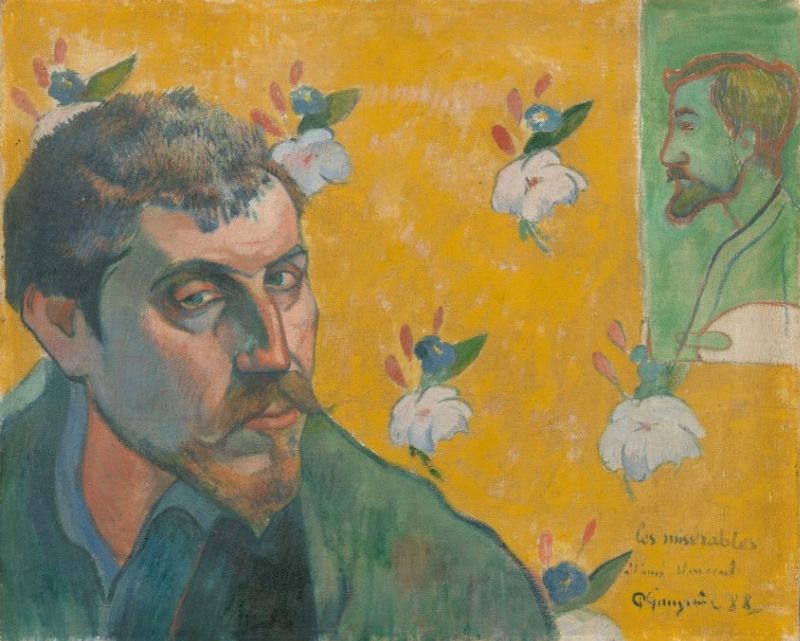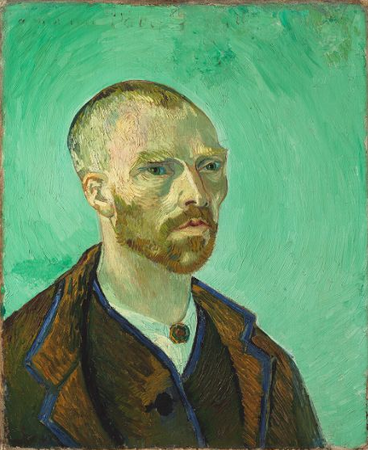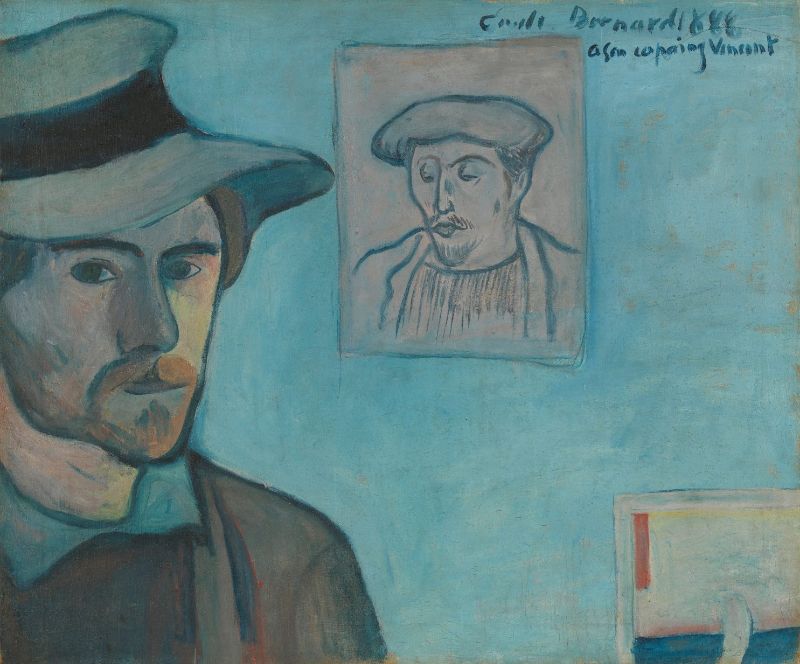Self-Portrait (Les Misérables) was painted by Paul Gauguin in 1888. Paul Gauguin was a 19th-century French draftsman, painter, printmaker, and sculptor.

“Self-Portrait with Portrait of Émile Bernard (Les Misérables)” by Paul Gauguin,1888. Credits (obliged to state): Van Gogh Museum, Amsterdam (Vincent van Gogh Foundation) https://www.vangoghmuseum.nl/
This painting depicts Gauguin’s self-portrait in the guise of Jean Valjean, the tragic hero in Victor Hugo’s novel Les Misérables. Gauguin identified himself as Jean who become a victim of arbitrary power in society. His portrait was placed in front of the floral background, which signifies his close relationship to nature. Gauguin supported the less industrially-developed cultures. For him, the romantic culture is more authentic, spiritual, and close to the fundamental elements of the cosmos.
Gauguin’s painting makes a strong impression on the viewer’s because of the intense colors and harsh lines. His composition is unique, in which his self-portrait was not located in the middle of the canvas but rather push to the left corner.
In the upper right corner, there is a self-portrait of Émile Bernard. Émile Bernard is a French painter who was working with Gauguin in Pont -Aven, French. This painting was made started from Van Gogh’s idea to exchange self-portrait as a way to build an artist community. Van Gogh was inspired by Japanese printmaker’s tradition to exchange their prints.

Vincent van Gogh, Self-Portrait Dedicated to Paul Gauguin, 1888, (Fogg, Harvard Art Museums, Cambridge, MA) https://smarthistory.org/

“Self-Portrait with Portrait of Gauguin” by Emile Bernard, 1888. Credits (obliged to state): Van Gogh Museum, Amsterdam (Vincent van Gogh Foundation). https://www.vangoghmuseum.nl/
Paul Gauguin is one of the key figures of Post-Impressionism. Post-Impressionism emphasizes the depiction that does not come not from the external observed world, but the internal memory and emotions of humans. They believe it will bring the viewer to a deeper level of meaning.
Up to now, Self-Portrait (Les Misérables) is still admirable, because of his experimental shapes, colors, and compositions, and also his idea to paint from his mental image.
